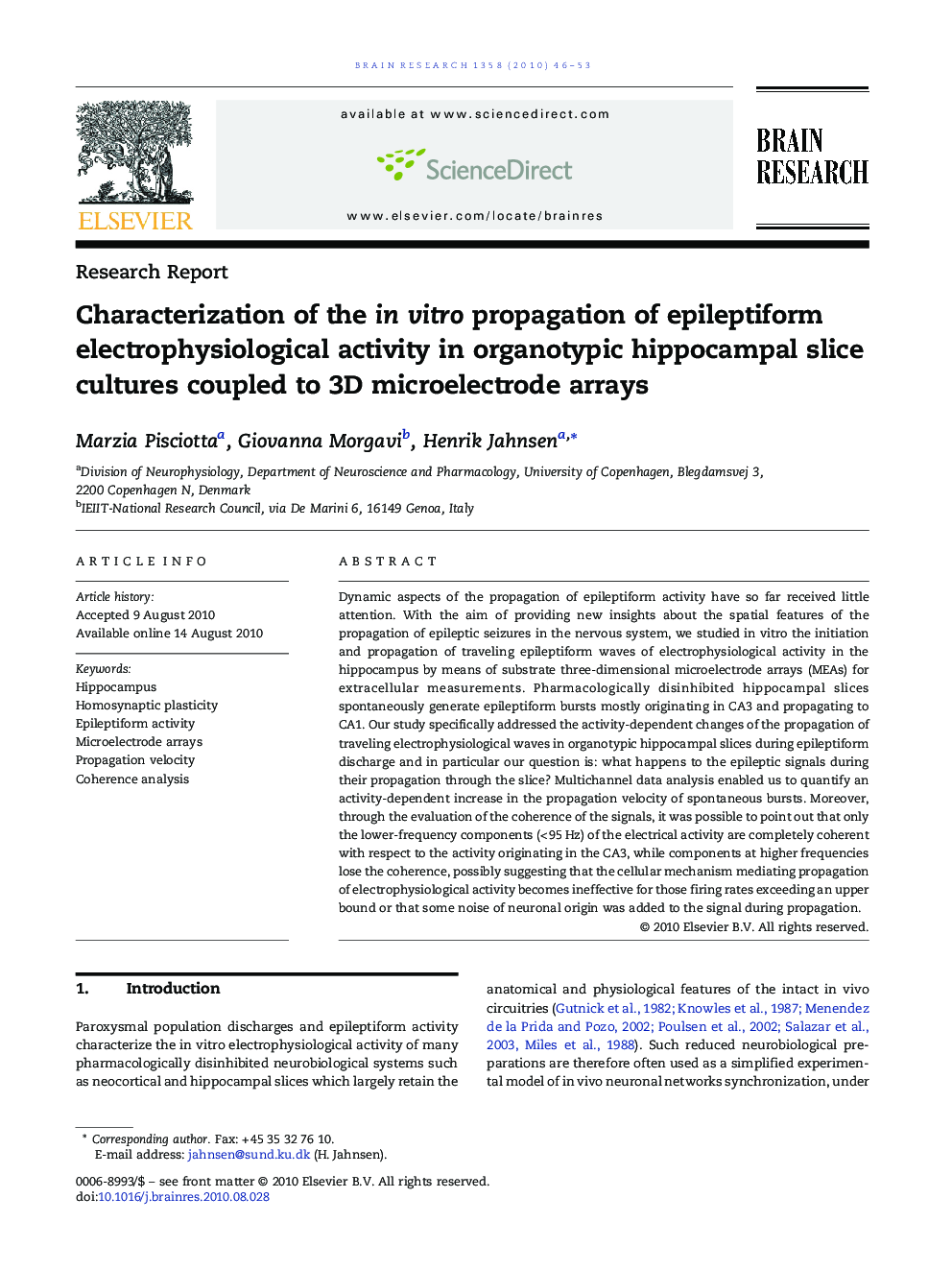| Article ID | Journal | Published Year | Pages | File Type |
|---|---|---|---|---|
| 6265425 | Brain Research | 2010 | 8 Pages |
Dynamic aspects of the propagation of epileptiform activity have so far received little attention. With the aim of providing new insights about the spatial features of the propagation of epileptic seizures in the nervous system, we studied in vitro the initiation and propagation of traveling epileptiform waves of electrophysiological activity in the hippocampus by means of substrate three-dimensional microelectrode arrays (MEAs) for extracellular measurements. Pharmacologically disinhibited hippocampal slices spontaneously generate epileptiform bursts mostly originating in CA3 and propagating to CA1. Our study specifically addressed the activity-dependent changes of the propagation of traveling electrophysiological waves in organotypic hippocampal slices during epileptiform discharge and in particular our question is: what happens to the epileptic signals during their propagation through the slice? Multichannel data analysis enabled us to quantify an activity-dependent increase in the propagation velocity of spontaneous bursts. Moreover, through the evaluation of the coherence of the signals, it was possible to point out that only the lower-frequency components (<Â 95Â Hz) of the electrical activity are completely coherent with respect to the activity originating in the CA3, while components at higher frequencies lose the coherence, possibly suggesting that the cellular mechanism mediating propagation of electrophysiological activity becomes ineffective for those firing rates exceeding an upper bound or that some noise of neuronal origin was added to the signal during propagation.
Research HighlightsâºPicrotoxin-induced bursts spread through hippocampus with increasing propagation speed. âºCoherence remains high for low frequencies as busting propagates from CA3 to CA1. âºAt higher frequencies, coherence is lost during propagation.
